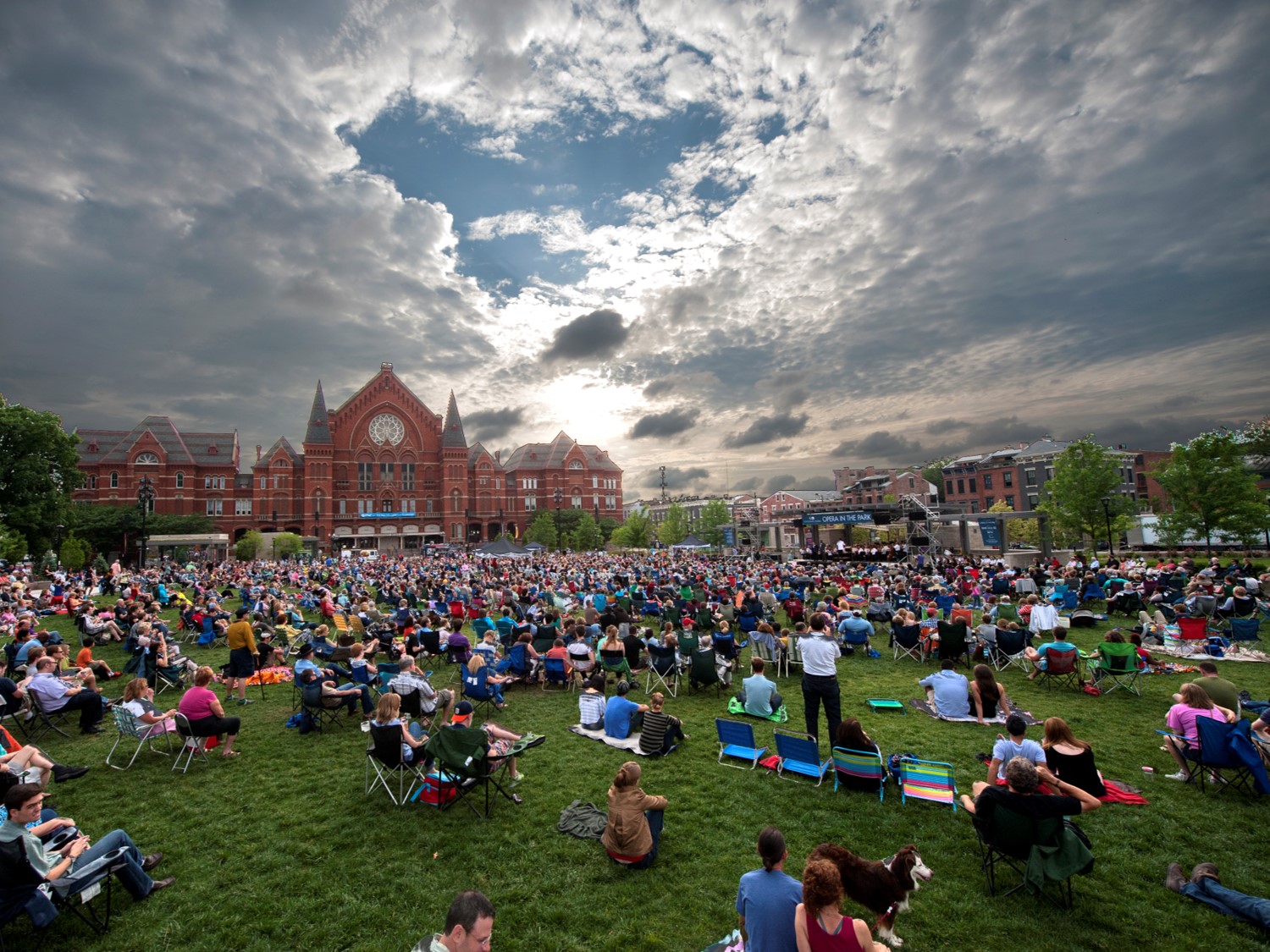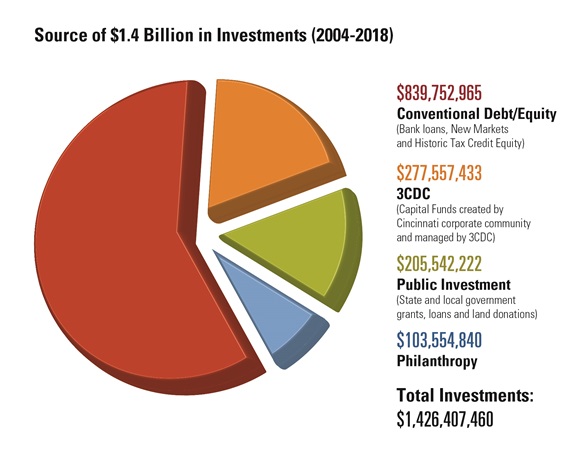Cincinnati’s Over-The-Rhine
A Private Led Model for Revitalizing Urban Neighborhoods
By Bruce Katz, Karen Black and Luise Noring

This is the first in a series of Nowak Metro Finance Lab City Cases, a set of case studies that will dig deeply into institutional and financing models that have driven large-scale urban transformation. City Cases seek to provide sufficient detail to enable large-scale adaptation and adoption and, over time, contribute to a new paradigm for financing inclusive cities by demonstrating how reorganizing public, private and civic resources in novel and creative ways can reshape local economies and remake local places.
Executive Summary:
In 2003, Cincinnati’s Mayor, Council and business leaders created a private, non-profit organization called the Cincinnati Center City Development Corporation (3CDC) to implement a revitalization plan for downtown and its adjacent Over-the-Rhine neighborhood. This paper explores how the Cincinnati model created a new type of institution that makes catalytic, non-conventional investments in real estate such as civic spaces, severely blighted properties, affordable and special needs housing, speculative condominium development, and retail and office developments. 3CDC and its corporate board used primarily private funding to improve civic spaces and to catalyze the transformation of vacant and underutilized properties into investable resources in order to reinvigorate Cincinnati’s dormant downtown and change the trajectory of a neighborhood plagued by blight and vacancy.
Who is 3CDC?
The Cincinnati Center City Development Corporation (3CDC) is a non-profit, privately led full service real estate development and finance organization formed in 2003 by Cincinnati corporate and civic leaders to direct the redevelopment of Cincinnati’s Central Business District – beginning with the area around Fountain Square – and the adjacent neighborhood of Over-the-Rhine (OTR).
What impact has 3CDC had?
3CDC has created a profound physical transformation of a 110-square-block area of Cincinnati over the last 15 years. With an investment of $1.4 billion, 3CDC has restored 166 buildings and 14 acres of civic space. 3CDC leveraged significant capital funding from Cincinnati corporate partners with conventional loans and public funding to complete large-scale redevelopment projects.

According to 3CDC, the $1.4 Billion Investment Resulted in:
- 166 Buildings Restored
- 14 Acres of Civic Space
- 2 Civic Buildings Restored
- 1,300 Apartments
- 534 Condominiums
- 156 Hotel Rooms
- 320 Shelter Beds
- 1,063,961 Commercial SF:
- 4,680 Parking Spaces
Why was 3CDC formed?
3CDC was established when Cincinnati was at a low point, having experienced decades of population loss and a 2001 multi-day racially-charged riot following the shooting of an unarmed black teen by police. The Mayor at the time, Charlie Luken, and corporate leaders agreed that action needed to be taken to spur revitalization and stem the tide of disinvestment in the core of the City. Corporate leaders hired a consultant (HR&A Advisors) and Mayor Luken formed the Economic Advisory Task Force. The consultant and task force both recommended the creation of a non-profit to provide the acumen to creatively finance and redevelop civic space and vacant properties and to manage a long-term strategic infusion of capital into Over-the-Rhine.
Has the Cincinnati Model created long-term inclusive growth?
3CDC’s regeneration of OTR and the confidence it engendered in the city’s largest employers and key stakeholders put Cincinnati back on track at a critical juncture in the city’s history. That, by itself, is an act with deep inclusive consequences, given how much opportunities for disadvantaged urban residents depend upon a prosperous economy and committed and sustained public, private and civic leadership. The substantial reinvestment in OTR’s housing market has, however, triggered a shift in neighborhood demographics. While 3CDC did not directly displace residents, as it primarily redeveloped vacant buildings and allowed renters to remain in the small percentage of occupied buildings it acquired, market pressures have motivated 3CDC leadership to undertake expansive inclusive growth strategies. 66 percent of the rental units 3CDC builds are affordable to households earning below 80% of area median income and 3CDC has helped to fund five new state-of-the-art homeless shelters. Today, OTR remains a high-poverty neighborhood (the neighborhood poverty rate is 41 percent, compared to 27.7 percent in the city as a whole) but with the continued creation of a mix of affordable and market rate housing and aggressive implementation of policies to ensure local residents benefit from new amenities, jobs and entrepreneurial opportunities, the Cincinnati model may become a success story for creating a sustainable, racially diverse, mixed income neighborhood.
Why is the Cincinnati Model important to explore?
The Drexel University Nowak Finance Lab has partnered with Accelerator for America to better understand the types of innovation in leadership, financing and collaboration that can regenerate our disinvested urban downtowns and neighborhoods. At a time when cities across the country are looking to create inclusive growth, it is essential that medium and small sized cities can identify, combine and reinvest local capital to revitalize old housing stock, reinvigorate flagging public spaces and create new jobs and vibrancy. The Cincinnati model shares important lessons on the power, agility, and leadership an organization needs to truly change the trajectory of neighborhoods plagued by blight and vacancy.
Read the City Case [PDF]
Sign up for updates from Nowak Lab